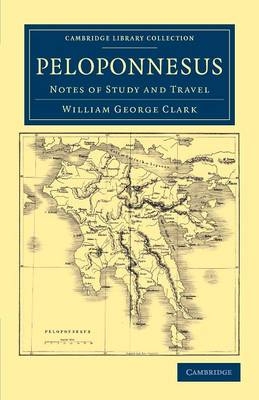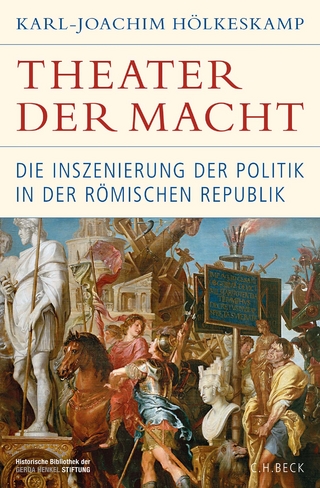
Peloponnesus
Notes of Study and Travel
Seiten
2011
Cambridge University Press (Verlag)
978-1-108-04196-6 (ISBN)
Cambridge University Press (Verlag)
978-1-108-04196-6 (ISBN)
William George Clark (1821–78), the co-editor of the Cambridge Shakespeare (1863–6), was a classical as well as a literary scholar, and this engaging combination of travel narrative and serious archaeological and topographical research, published in 1858, was the result of an archaeological tour of the Peloponnese in 1856.
William George Clark (1821–78) is probably best remembered as the co-editor (with W. Aldis Wright) of the Cambridge Shakespeare (1863–6; also reissued in this series). A fellow of Trinity College, Cambridge, he was a classical and literary scholar and editor, but travelled widely in his vacations, and this work, first published in 1858, is an account of a tour of Greece undertaken in 1856 with W. H. Thompson (1810–86), who later succeeded William Whewell as Master of Trinity. Clark's plan was to visit the archaeological sites of the Peloponnese using W. M. Leake's various surveys as a guide and comparing Leake's observations and his own with those of the ancient traveller Pausanias. The result is an engaging combination of travel narrative and serious archaeological and topographical research backed up by a profound knowledge of classical literature. It remains an interesting resource for those studying the history of Greek archaeology.
William George Clark (1821–78) is probably best remembered as the co-editor (with W. Aldis Wright) of the Cambridge Shakespeare (1863–6; also reissued in this series). A fellow of Trinity College, Cambridge, he was a classical and literary scholar and editor, but travelled widely in his vacations, and this work, first published in 1858, is an account of a tour of Greece undertaken in 1856 with W. H. Thompson (1810–86), who later succeeded William Whewell as Master of Trinity. Clark's plan was to visit the archaeological sites of the Peloponnese using W. M. Leake's various surveys as a guide and comparing Leake's observations and his own with those of the ancient traveller Pausanias. The result is an engaging combination of travel narrative and serious archaeological and topographical research backed up by a profound knowledge of classical literature. It remains an interesting resource for those studying the history of Greek archaeology.
Preface; 1. Outward bound; 2. From Athens to Megara; 3. The Isthmus - Corinth; 4. Nemea, Mycenae, and Tiryns; 5. Argos, and its neighbourhood; 6. A Greek church; 7. Karya; 8. Nestane and Mantinea; 9. From Tripolitza by Tegea to Sparta; 10. Sparta; 11. Xerókampo - a digression; 12. Taygetus; 13. Kalamata - the Homeric Pherae; 14. Navarino; 15. Vourkamo - Messene - Mavrozoumeno; 16. The black Demeter - Eira; 17. Phigalea - Bassae; 18. From Andritzena by Olympia to Pyrgo; 19. The Plain of Elis - Patras; 20. Vostizza - Megaspelion; 21. Styx; 22. Pheneos - Stymphalus; 23. Albanians, Sclavonians, and Hellenes; 24. Sicyon.
| Reihe/Serie | Cambridge Library Collection - Travel, Europe |
|---|---|
| Zusatzinfo | 5 Maps |
| Verlagsort | Cambridge |
| Sprache | englisch |
| Maße | 140 x 216 mm |
| Gewicht | 470 g |
| Themenwelt | Reisen ► Reiseberichte ► Europa |
| Geisteswissenschaften ► Archäologie | |
| Geschichte ► Allgemeine Geschichte ► Altertum / Antike | |
| Geisteswissenschaften ► Geschichte ► Regional- / Ländergeschichte | |
| ISBN-10 | 1-108-04196-5 / 1108041965 |
| ISBN-13 | 978-1-108-04196-6 / 9781108041966 |
| Zustand | Neuware |
| Haben Sie eine Frage zum Produkt? |
Mehr entdecken
aus dem Bereich
aus dem Bereich
Die unglaubliche Geschichte eines antiken Söldnerheeres
Buch | Hardcover (2022)
C.H.Beck (Verlag)
CHF 39,20
die Inszenierung der Politik in der römischen Republik
Buch | Hardcover (2023)
C.H.Beck (Verlag)
CHF 67,20


